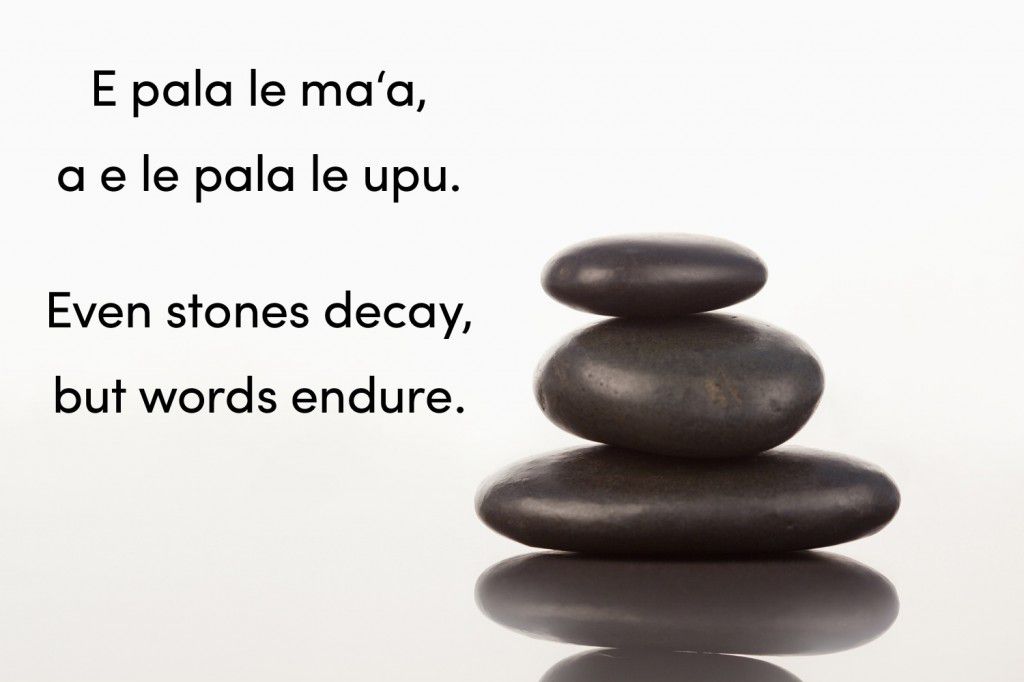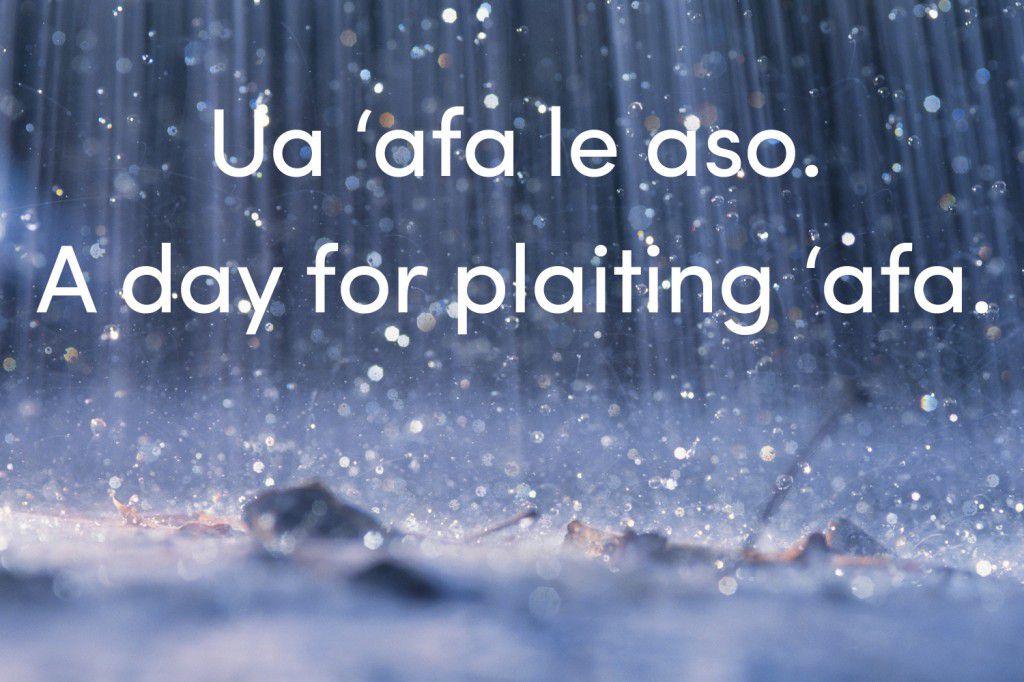The Language Forest: how are world languages related?
Have you ever wondered how different languages in the world are related to each other? Some of the answers may be surprising…
Did you know, for example, that the Finnish language isn’t directly related to Danish or Norwegian? It’s actually a Uralic language, in the same family as Hungarian and Estonian, whereas the others are North Germanic.
Or that Korean and Basque are two examples of a language isolate, which means they’re not related to any other language in the world?
According to Ethnologue, the Indo-European language family has the most speakers (2.9m), although the Niger-Congo family includes the most languages (1,524).
To find out more, check out our forest of language family trees below. Please click on the image to make it bigger and have a good look around; you may well discover languages you never knew existed…
(Please note: the forest doesn’t include every language in the world; it would have been difficult to fit all 6,000+ in! So if we’ve missed off your language, we’re really sorry and hope you’ll forgive us.)
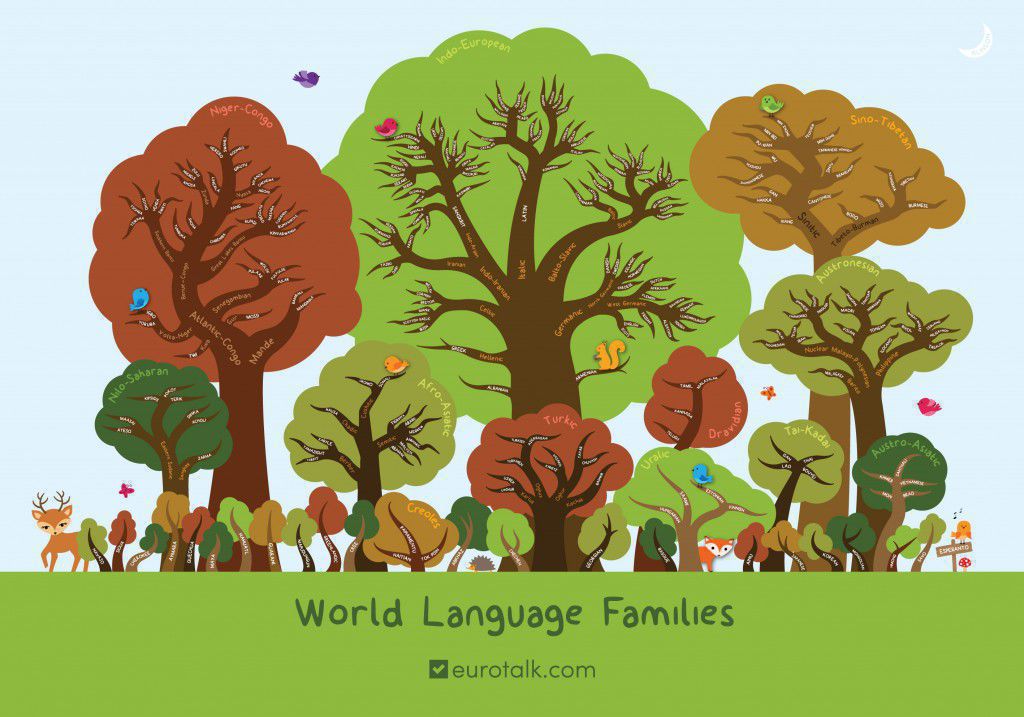 If you’d like to share the image on your own blog or website, you’re more than welcome – please use the embed code below. We also include a free poster-sized copy of the language forest with all our CD-ROM and USB products (available from eurotalk.com), with a world language map on the reverse.
If you’d like to share the image on your own blog or website, you’re more than welcome – please use the embed code below. We also include a free poster-sized copy of the language forest with all our CD-ROM and USB products (available from eurotalk.com), with a world language map on the reverse.
We hope you enjoy exploring the language forest 🙂
Embed This Image On Your Site (copy code below):
Quote of the week: 30 May 2015
“Don’t wish it were easier, wish you were better.” Jim Rohn
Embed This Image On Your Site (copy code below):
Travels with a language geek
After almost three years as an (unofficial, for the last year) member of the EuroTalk family, I’ve finally decided that it’s time for me to move on and take my passion for languages and cultures on the road. So, I’m hanging up my localisation project manager hat (not literally of course – there’s no designated hat for that) and setting off on a trip across Europe.
 I have to say that at the moment my plans are pretty vague. My partner has a car, so we’re packing our stuff in the boot, getting in and heading off for a mega road trip across Europe: the Netherlands, Germany, the Czech Republic, Poland and Ukraine, for a start. Then the idea is to end up in Lviv, Western Ukraine and stick around there for a while until we decide the next phase of our plan. There’s no particular time-scale on any of this – we’re simply going to drive from city to city, visit a few friends, see some sights and move on when we feel like it. The only limit on how much time we can spend driving from place to place is money, and how long we can stand spending that much time together. When we finally get to Lviv, we’re planning to rent a flat there for a while and live the digital nomad lifestyle, experiencing life in Ukraine and using Lviv as a base from which to explore other parts of Eastern Europe.
I have to say that at the moment my plans are pretty vague. My partner has a car, so we’re packing our stuff in the boot, getting in and heading off for a mega road trip across Europe: the Netherlands, Germany, the Czech Republic, Poland and Ukraine, for a start. Then the idea is to end up in Lviv, Western Ukraine and stick around there for a while until we decide the next phase of our plan. There’s no particular time-scale on any of this – we’re simply going to drive from city to city, visit a few friends, see some sights and move on when we feel like it. The only limit on how much time we can spend driving from place to place is money, and how long we can stand spending that much time together. When we finally get to Lviv, we’re planning to rent a flat there for a while and live the digital nomad lifestyle, experiencing life in Ukraine and using Lviv as a base from which to explore other parts of Eastern Europe.
You might wonder why of all places I’ve chosen to go and live in Ukraine. Well, I wish I could give you a really great and well-thought out reason, but the simple fact is: it’s really cheap to live there right now! According to NomadList.com, you can live in Lviv on $400 a month. That’s around £250 – less than half of what I pay each month in rent here in London. Which is pretty appealing to someone who is trying to live as a digital nomad for the foreseeable future. For those of you who don’t spend as much time as I do stalking travel bloggers on Twitter, a digital nomad is someone who lives abroad and/or travels indefinitely, funding themselves by working remotely via wifi and their laptop. A few intrepid travellers out there have managed to fund themselves all the way around the world just by blogging, writing or completing other online work. In my case I’ll be translating to earn my daily bread, whilst pretending to be a super-cool international travel blogger the rest of the time. It’s all about wearing expensive sunglasses and taking selfies, I’m assured.
But taking advantage of 30p beers isn’t the only reason I’m excited to experience life in Eastern Europe. As a language geek, of course I can’t wait to try my hand at picking up Russian and bits of other local languages: Polish, Ukrainian and Czech sounds like a start! Not to mention finding out as much as I can about the culture, lifestyle and places of this amazing region. Oh, and I’ll be bombarding everyone with updates and photos via my brand-new blog: postcardsfromukraine.com, which is already in the top ten blogs about being a digital nomad in Ukraine written by a Brit and an Italian. So, if you’re curious, feel free to catch up with us on Twitter @ukrpostcards or the Postcards from Ukraine Facebook page, and I promise to keep EuroTalk updated on my language-learning goals too.
Alex
Supermarket Swipe
I’m a Morrisons kind of girl.
And when I look longingly into my box of Yorkshire Tea and see nothing but tealeaf dust, I miss it.
I miss a store layout I recognise. I miss being a ble to identify what things are without imaginative guess work and Google Translate. But most of all, I miss English products.
ble to identify what things are without imaginative guess work and Google Translate. But most of all, I miss English products.
When you are far from home and craving custard, and the mere pronunciation of the word ‘vanilla’ fills shop assistants with mirth, you too will experience saudade at the thought of your local supermarket. Because supermarkets abroad sell all manner of things that you would not expect to find. And asking for help when you aren’t exactly sure what you’re asking for is everything from embarrassing to adventurous.
It’s tricky out there.
My fellow Brits abroad: on returning home, don’t be surprised if you feel the sudden urge to run into your nearest supermarket and pull the fishmonger into a tight embrace. Just make sure he doesn’t have a fish filleter in his hand when you do.
Still, never let it be said that there aren’t delightful discoveries to be made Out There. Here is a selection of my own that I haven’t yet decided if I am looking back on with fright or fondness.
China
China might be a bit of an outlier in the joy of supermarket shopping. The ones I went to were the full several-floor ‘we sell everything you can think of and probably some things you have nightmares about’ flavour, with counters offering up an array of unknowns and unidentifiables.
If you are an avid coffee drinker, it might be wise to take a stash of your own. Those crimes-against-coffee all-in-one sachets of coffee, milk powder and sugar are enough to make any coffee aficionado turn and weep.
Something that truly delighted me in Chinese supermarkets (and yes. I am easily amused) was that you can buy milk in pouches. Rather than the cartons we are used to in the UK, milk here – and expect a wide variety of dairy, soya and rice milk – is often sold in these thick, plastic pouches that have a satisfying squishy feeling when you juggle them in your hands. Not that you should really do that. Unless you want an audience.
Hungary
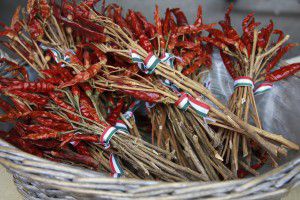 Hungary is the land of paprika and sour cream. Paprika comes in different strengths of spiciness and there are either ‘regular’ or ‘sweet’ varieties to choose from. Sour cream (tejfol) has all sorts of uses in both sweet and savoury dishes, and you can buy it in all manner of sizes – from the small cartons arranged like pots of fromage frais, to the litres of the stuff in containers the size of those value packs of magnolia paint at B&Q. (It is also apparently a very effective ‘after sun’, but I’m not sure about that.)
Hungary is the land of paprika and sour cream. Paprika comes in different strengths of spiciness and there are either ‘regular’ or ‘sweet’ varieties to choose from. Sour cream (tejfol) has all sorts of uses in both sweet and savoury dishes, and you can buy it in all manner of sizes – from the small cartons arranged like pots of fromage frais, to the litres of the stuff in containers the size of those value packs of magnolia paint at B&Q. (It is also apparently a very effective ‘after sun’, but I’m not sure about that.)
Supermarkets in Hungary are generally smaller than you may be used to at home, but they are pretty well stocked. For some reason, apples are on the pricey side, but the fact that you can buy cherries (both normal and sour, which are delicious) and all manner of berries for a fraction of the price you’d pay at home more than compensates. Another surprising thing is that Spar is an actual supermarket, rather than the emergency-chocolate-fix kind of place that I am used to.
Spain
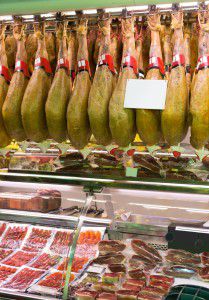 Pig legs. Whole pig legs, right down to hoof, are dangled from ceilings and fanned out on counters in enticing displays. This is not a delicacy, but an everyday food product that you will find in many a Spanish kitchen. Ham is so important to Spaniards you could say it is part of the culture. From jamón serrano to jamón york, and a whole spectrum in between, you will never be short of ham if you need it.
Pig legs. Whole pig legs, right down to hoof, are dangled from ceilings and fanned out on counters in enticing displays. This is not a delicacy, but an everyday food product that you will find in many a Spanish kitchen. Ham is so important to Spaniards you could say it is part of the culture. From jamón serrano to jamón york, and a whole spectrum in between, you will never be short of ham if you need it.
For those of you who like to bake, be prepared to make some product replacement choices. Butter and margarine is available here but since most cook and bake with oil instead, and pour oil on their toast in the morning, you might not find exactly what you were looking for.
Alcohol is incredibly cheap here, and very good quality. Good wine is pretty much a given, and when you can buy nice cava for under two euros, or a can of beer for less than 30 cents, you can wonder at how people aren’t walking around constantly merry all day long.
There is a huge range of disposable products in Spanish supermarkets, including napkins, tissues and kitchen roll. And plates, bowls and cups. They even have the ‘balloon’ glasses in plastic form, just in case you decide on a cheeky gin and tonic on an impromptu picnic.
Finland
Our last whistle-stop on the supermarket tour is in the beautiful Finland, with large supermarkets of enough content to satisfy even the most dithering of customers (me). There are more varieties of sausage here than I have ever seen in my life, delicious rye breads, and very good cheese and salami.
One thing that threw me a little was an ‘addition’ to the toilet tissue aisle that I hadn’t anticipated. Since Finland is the land of the sauna, and more importantly, the all-naked sauna, there are disposable sauna ‘tissues seats’ for you to sit on that you can purchase in multipacks, ready for your public sauna experience. If you have your own sauna, and what self-respecting Finn doesn’t, you should of course purchase your own special sauna ‘pad’, which comes in a range of covers, colours and thicknesses. It is a whole new world.
These items might seem like an odd collection of things, and in many ways they are. But on a day when all you want is the home comfort of knowing in which aisle to find a tin of beans, good tea bags, and a bakewell tart, the call of the home supermarket is strong. Especially the bakery aisle. Oh, how I miss the bakery aisle…
Kelly
Language of the Week: Samoan
To celebrate Samoan Language Week which runs from 24th May to 1st June this year, here are ten facts about this beautiful language and nation, which many of us know very little about.
If you fancy giving it a try, you can now start learning Samoan for free with uTalk. And for this week only, we’ve reduced the price of the Essentials and Premium upgrades to £2.99 and £6.99 (usually £7.99 and £11.99).
10 Facts about Samoan
- Samoan is a member of the Polynesian language family, one of the oldest branches still in existence today.
- It’s the official language of Samoa, where it has approximately 200,000 native speakers.
- It’s also spoken in New Zealand, where it’s the third most-spoken language, after English and Māori.
- The Samoan language is written using a Latin-based alphabet.
- Samoan’s alphabet has just 14 letters: 5 vowels and 9 consonants. 3 more consonants – H, K and R – are used in loan words from other languages.
- The Samoan flag’s upper left quarter is blue and has five white, five-rayed stars representing the Southern Cross. The rest of the flag is red.
- Samoa consists of seven islands in the South Pacific Ocean. The two main islands are Savai’i and Upolu.
- It takes 20 hours to fly to Samoa from London.
- Lu’au is a traditional Samoan dish, consisting of coconut cream, onions and taro, wrapped in taro leaves and then cooked.
- Samoans are known throughout Polynesia as ‘happy people’.
5 Samoan proverbs
The Samoan language is full of proverbs and idioms; here are five of our favourites:
E pala le maʻa, a e le pala le upu
Translation: Even stones decay, but words endure.
A reminder of the damage that hurtful words can do.
Ia malu le vai i lou finagalo
Translation: May your mind be like cool water.
This phrase is used to ask someone for forgiveness if you’ve offended them.
Se’i fono le pa’a ma ona vae
Translation: Let the crab take counsel with its legs.
This proverb advises us to think things through before we take action.
Amuia le masina, e alu ma toe sau
Translation: Fortunate is the moon, to go and then return.TranslationHumans only get one life, unlike the moon; so we should make the most of it.
Humans only get one life, unlike the moon; so we should make the most of it.
Ua ‘afa le aso
Translation: A day for plaiting ‘afa.
A rainy day. ‘Afa is a plaited rope made from dried coconut fibres, and used in architecture and boat building.
We’ll be sharing more fun facts about Samoan as the week goes on…

